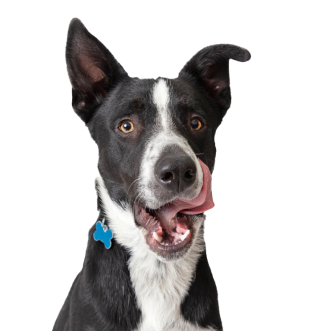
-
Find the right food for your petTake this quiz to see which food may be the best for your furry friend.Find the right food for your petTake this quiz to see which food may be the best for your furry friend.Featured products
 Adult Chicken & Barley Recipe Dog Food
Adult Chicken & Barley Recipe Dog FoodSupports lean muscle and beautiful coat for adult dogs
Shop Now Adult Small & Mini Lamb Meal & Brown Rice Recipe Dog Food
Adult Small & Mini Lamb Meal & Brown Rice Recipe Dog FoodFor the faster metabolism of Small & Mini dogs
Shop Now Puppy Lamb Meal & Brown Rice Recipe
Puppy Lamb Meal & Brown Rice RecipeVital nutrients to support 5 essential building blocks for lifelong health
Shop NowFeatured products Adult Chicken & Barley Recipe Dog Food
Adult Chicken & Barley Recipe Dog FoodSupports lean muscle and beautiful coat for adult dogs
Shop Now Hill's Science Diet Adult Sensitive Stomach & Skin Chicken Recipe Dog Food
Hill's Science Diet Adult Sensitive Stomach & Skin Chicken Recipe Dog FoodHighly digestible recipe, gentle on stomachs. Nourishes skin & promotes a lustrous coat
Shop Now Adult Indoor Chicken Recipe Cat Food
Adult Indoor Chicken Recipe Cat FoodSupports energy level and beautiful fur in indoor cats
Shop Now -
Dog
- Dog Tips & Articles
-
Health Category
- Weight
- Food & Environmental Sensitivities
- Urinary
- Digestive
- Joint
- Kidney
-
Life Stage
- Puppy Nutrition
- Adult Nutrition
- Senior Nutrition
Cat- Cat Tips & Articles
-
Health Category
- Weight
- Skin & Food Sensitivities
- Urinary
- Digestive
- Kidney
-
Life Stage
- Kitten Nutrition
- Adult Nutrition
Featured articles Virtual Vet Visits: What You Need to Know
Virtual Vet Visits: What You Need to KnowLearn the ins and outs of a televet appointment before you talk to a vet online.
Read More Pet Dental Health: What Happens During a Deep Teeth Cleaning?
Pet Dental Health: What Happens During a Deep Teeth Cleaning?Learn about veterinary dental care for your pet, including deep teeth cleaning procedures, which can help your dog or cat maintain proper dental health.
Read More My Pet Ate a Lizard — What Should I Do?
My Pet Ate a Lizard — What Should I Do?Learn what to do if your pet eats a lizard, including whether they can be toxic and symptoms to keep an eye on when they've swallowed one.
Read More -


As a loving pet owner, you do everything possible to keep your dog in tip-top shape, from feeding them the most nutritious food and treats to making sure he exercises daily and taking him to the veterinarian for preventative care. But are you paying enough attention to dog oral care? If not, it's time to change your ways. After all, proper oral care is what makes the difference between healthy dog teeth and an oral condition that could be causing your pup discomfort (or even pain).
What Does a Healthy Dog's Mouth Look Like?
Before you learn how to take care of your dog's teeth (and what can happen if you don't), you need to understand what a healthy mouth looks like in the first place. Healthy dog teeth should be clean and free of plaque and tartar (hard, scaly or sticky discolorations). Similarly, your dog's 42 teeth (a third more than you have, as Pet Health Network® points out) should be intact and not jagged or broken.
Your furry friend's tongue should be moist — without any signs of lumps or cuts. And, in most cases, his gums should be salmon pink. Some dog breeds naturally have black or black-and-pink gums, notes PetHelpful, which can make looking for the usual signs of discoloration tricky. Make sure you know what your pet's mouth usually looks like, and talk to your vet if you spot any lumps, raised spots, pale gums or bright red tissue.

How to Keep Your Dog's Mouth Clean
Dogs aren't born with healthy mouths that will stay that way into adulthood — it's up to us to help them keep their pearly whites in tip-top shape. Regular brushing with a dog-specific toothbrush and toothpaste helps, and so do certain toys and treats that are formulated to reduce bacteria in your dog's mouth. Just as you brush your own teeth a few times a day, a dog's mouth also needs daily attention.
If brushing your dog's teeth is new to the both of you, be sure to take baby steps. As the American Kennel Club (AKC) notes, you'll want to get your dog comfortable with you touching his mouth and teeth first before you come at him with a toothbrush and toothpaste. First, touch his muzzle and practice rubbing your finger along his teeth and gums. Once he can handle this — while staying calm and relaxed — introduce the toothbrush. Let him smell it, and very gently rub it on his teeth. This process may take a few days for each step. Go slowly, and don't rush your pet. After all, you don't want him to develop anxious or negative feelings about this routine.
Once you've developed the trust needed for successful brushing, it's time to work on technique. First, lift your dog's lips and brush his front teeth. Slowly work your way to the back of his mouth, paying careful attention to the outside of his teeth. You may need to pull back at first and only do a few teeth at a time. Once you're both used to the process, you'll find the routine quick and simple to complete. Dog toothpaste is also specially formulated to be as tasty as possible, as long as you like turkey and chicken better than minty freshness. Look for a dog-specific paste at your local pet supply store or vet's office. Remember: You should never use human toothpaste on your dog, since the ingredients can irritate his stomach and make him extremely sick.
Another important part of dog oral care is an annual professional cleaning at your vet's office. This procedure should be done under anesthesia, every one to three years, Pet Health Network reports. Your vet can clean under your pup's gums and in other hard-to-reach places in ways that prevent oral and systemic diseases. During this process your vet may also want to take X-rays of your pup's teeth to make sure there aren't any other underlying issues, similar to what you might do at your own dental checkup.
For other ongoing dog oral care efforts, you can look into proper nutrition for your pup. Dog food that is formulated for your dog's oral care, may help reduce plaque and tartar buildup as well as help to freshen his breath. For any dog parent that gets doggy kisses, fresh breath is a must!


Tasty Tips

Dog Oral Care Concerns to Look For
If you notice any changes in your dog's mouth, such as lumps, discoloration, swelling, sores or a change in smell, contact your dog's vet immediately. Any of these could be signs that your dog is experiencing an oral disease or condition that needs to be treated. Here are some common oral care problems your dog may experience, with tips on when you should contact your vet:
- Halitosis: Bad breath (or halitosis) may be the first sign of a problem with your pet's oral health, says the AKC. Halitosis occurs when bacteria from food gets stuck in your dog's mouth. An infection may also be the cause here. If your pet's breath is a bit funky, start by brushing his teeth more frequently. Halitosis can usually be treated by regular brushing, but if it's caused by something more serious — like an infection or even kidney disease — you will need to contact the vet for appropriate treatment.
- Cysts and tumors: Have you noticed any lumps in your pet's mouth? If so, make an appointment to get him examined right away. While some lumps and bumps are of no concern, those found in your dog's mouth may represent a cyst or tumor, notes PetHelpful. Some cysts may need to be drained by your vet, and lumps should be biopsied and removed if they are malignant.
- Gingivitis: Inflamed gums caused by heavy plaque on your pet's teeth are often a sign of gingivitis. Here's the good news: With regular cleaning, this condition is reversible. Start by getting serious with brushing your pet's teeth once a day. If you notice any bleeding or changes in gum color, contact your vet.
- Periodontal disease: Periodontal disease is an infection between the teeth and gums that can cause swelling, loose teeth, pain, difficulty eating, or even nasal discharge (humans can develop it by not brushing, too). The Banfield Pet Hospital encourages dog parents to look for signs like yellow or brown teeth, red or swollen gums and difficulty chewing. If your dog shows any of these or other signs of loose teeth or mouth pain, take him to your vet. He or she will likely examine your pet to look for signs of infection, and your dog may need to be put on a treatment plan.
- Proliferating gum disease: A condition that's often associated with bull terriers and boxers, proliferating gum disease occurs when a dog's gum line grows over the teeth, notes Bernville Veterinary Clinic. This excess growth leads to more opportunity for infection, and should be treated with antibiotics.
By helping your dog maintain proper oral care, you can hopefully avoid all of the above common oral conditions. Show your pet you care, and help them keep those teeth, gums and tongue clean.


Erin Ollila believes in the power of words and how a message can inform—and even transform—its intended audience. Her writing can be found all over the internet and in print, and includes interviews, ghostwriting, blog posts, and creative nonfiction. Erin is a geek for SEO and all things social media. She graduated from Fairfield University with an M.F.A. in Creative Writing. Reach out to her on Twitter @ReinventingErin or learn more about her at http://erinollila.com.
Related products

Supports lean muscle and beautiful coat for adult dogs

For the faster metabolism of Small & Mini dogs

Supports energy level and beautiful coat in mature dogs who prefer smaller kibble

Vital nutrients to support 5 essential building blocks for lifelong health
Related articles

Discover how the field of dog science is giving us more and more insights into the inner workings of our furry best friends.

Learn about Hill's puppy food and the nutritional benefit & high quality ingredients that it contains for your pup.

Your dog's coat and skin are a big part of your dog's overall health. Ensure you keep your dog's coat healthy, by following these simple tips.

Proper nutrition for your pregnant or nursing dog is vital to her and her puppy's health. Learn what you should do provide her with the proper nutrients.

Put your dog on a diet without them knowing
Our low calorie formula helps you control your dog's weight. It's packed with high-quality protein for building lean muscles, and made with purposeful ingredients for a flavorful, nutritious meal. Clinically proven antioxidants, Vitamin C+E, help promote a healthy immune system.
Put your dog on a diet without them knowing
Our low calorie formula helps you control your dog's weight. It's packed with high-quality protein for building lean muscles, and made with purposeful ingredients for a flavorful, nutritious meal. Clinically proven antioxidants, Vitamin C+E, help promote a healthy immune system.

